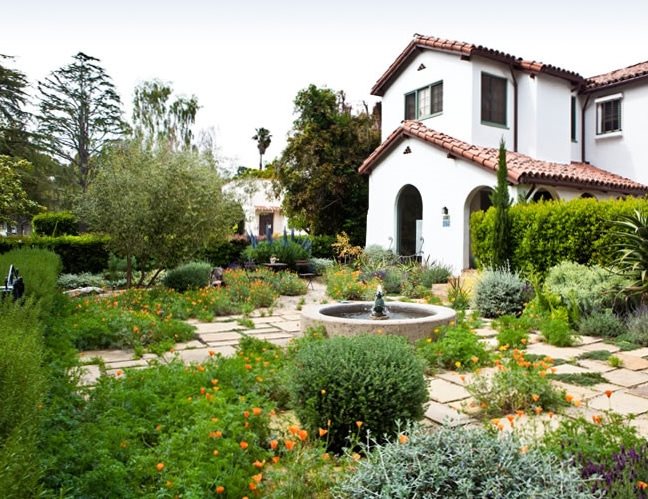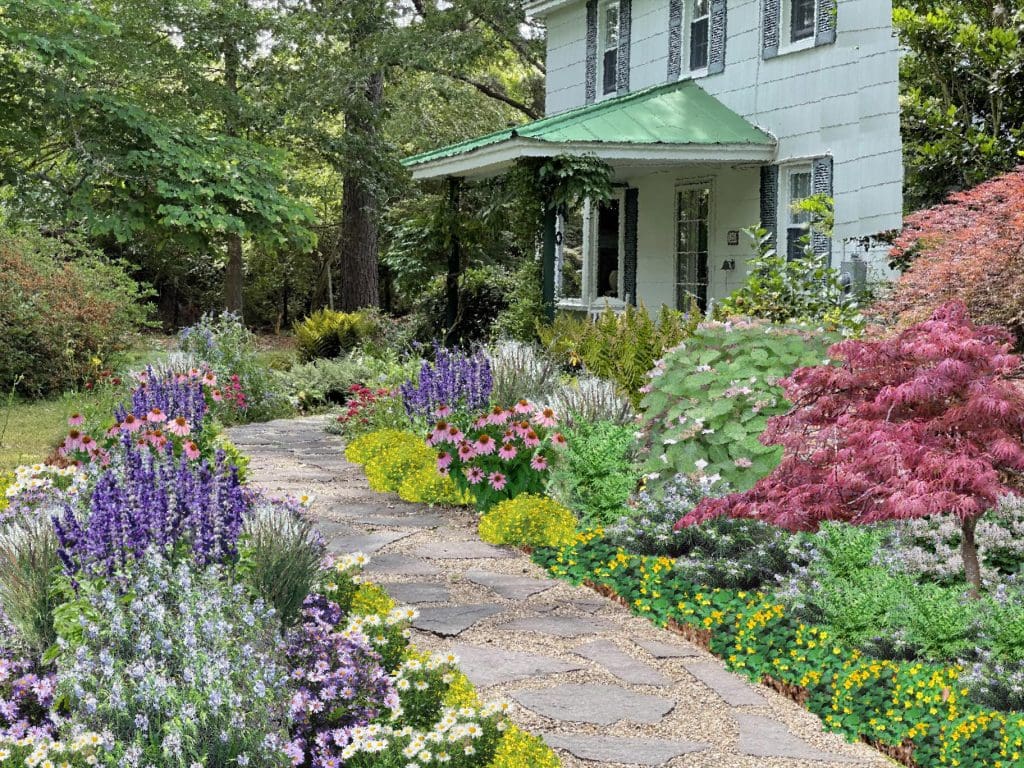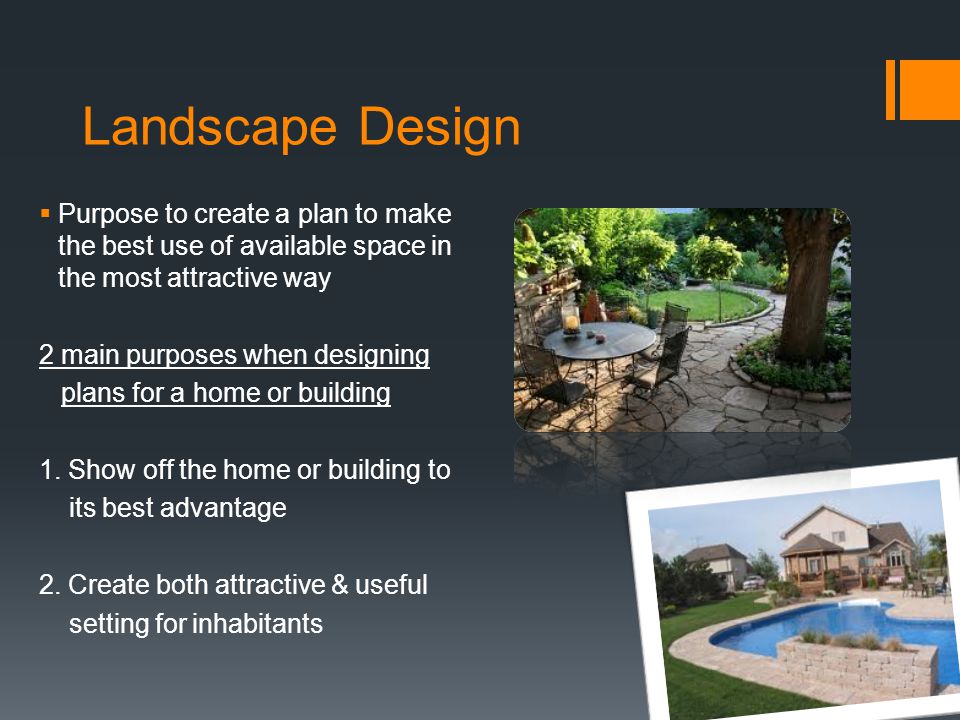How Hilton Head Landscapes can Save You Time, Stress, and Money.
How Hilton Head Landscapes can Save You Time, Stress, and Money.
Blog Article
The Buzz on Hilton Head Landscapes
Table of ContentsHilton Head Landscapes Can Be Fun For AnyoneThe Only Guide for Hilton Head LandscapesThe Main Principles Of Hilton Head Landscapes The smart Trick of Hilton Head Landscapes That Nobody is Talking AboutHilton Head Landscapes Things To Know Before You Get ThisThe Ultimate Guide To Hilton Head LandscapesWhat Does Hilton Head Landscapes Mean?
Line develops all types and patterns and can be used in a selection of methods in the landscape. Line in the landscape is created by the edge in between two products, the summary or silhouette of a type, or a long direct feature. Lines are an effective device for the designer due to the fact that they can be utilized to develop a limitless variety of forms and forms, and they manage movement of the eye and the body.

Lines can have several attributes, such as those explained below, but they usually offer various purposes. Figure 1. Lines in the landscape - Landscapers near me. The residential or commercial properties of lines identify how people respond to the landscape, both emotionally and physically. Straight lines are structural and strong; they develop an official personality, are normally connected with an in proportion style, and lead the eye straight to a centerpiece.
9 Simple Techniques For Hilton Head Landscapes
Curved lines create a casual, all-natural, kicked back character that is associated a lot more with nature and asymmetrical balance. Bent lines move the eye at a slower pace and add enigma to the space by producing hidden views.
Upright lines in the landscape include tall, narrow plant product, such as trees, or high frameworks, such as an arbor or a bird residence on a pole. Horizontal lines move the eye along the ground aircraft and can make a room really feel larger. Low lines are a lot more subdued and create a feeling of rest or repose.
The Definitive Guide for Hilton Head Landscapes
Low lines are created by reduced yard wall surfaces, pathways, and short bushes. Lines are used to attract types on a plan. In plan view, they define plant beds and hardscape locations. Lines are additionally produced by the vertical forms of built attributes and plant material. There are three primary line kinds that produce form in the landscape: bedlines, hardscape lines, and plant lines.
Bedlines connect plant product to your home and hardscape since the eye complies with the line, moving the gaze via the landscape. Hardscape lines are developed by the edge of the hardscape, which marks the constructed structure. Line can also be developed by long and slim materials, such as a fencing or wall.
The Single Strategy To Use For Hilton Head Landscapes
Type is located in both hardscape and plants, and it is normally the dominant visual aspect that spatially organizes the landscape and usually identifies the design of the garden. The kind of frameworks, plant beds, and yard ornaments likewise figures out the total form theme of the garden. Formal, geometric types consist of circles, squares, and polygons.
Plants create kind in the yard through their describes or silhouettes, however type can additionally be specified by a gap or negative space between plants - landscapers in bluffton sc (https://www.indiegogo.com/individuals/37931614). Circles can be cycles, or they can be divided into fifty percent circles or circle sections and combined with lines to produce arcs and tangents
The Hilton Head Landscapes PDFs
Circles can additionally be stretched into ovals and ellipses for even more selection and passion. Circles are a strong style kind because the eye is always drawn to the center, which can be utilized to stress a centerpiece or connect other forms. Figure 2. Circular forms in hardscape and yard panels.
The square type can also be segmented and pre-owned repetitively to develop a grid pattern. Unlike circles, squares are more powerful on the brink, which can be lined up or overlapped to create unique patterns and more complex forms. Polygons are many-sided kinds with straight edges. Triangles, as an example, are three-sided polygons.
Twisting lines typically simulate the natural course of rivers or streams and can be described as smooth lines with deeply bent undulations. Twisting lines (Figure 3) work well for paths, plant bedlines, and dry stream beds. Twisting lines can include interest and enigma to a yard by leading audiences around corners to uncover new sights and rooms.
The Ultimate Guide To Hilton Head Landscapes

Typical plant kinds are well established and standardized, as kind is the most regular and recognizable attribute of plants. Kind can also be produced with the massing of plants, where the general mass creates a different type than a specific plant.
A very different kind must be used with careone or more job well as a focal factor, but way too many develop disorder. All-natural plant forms, rather than over-trimmed forms, ought to establish the mass of the make-up. The relevance of overall form is essentially reliant on the watching perspectivethe kind of a tree can show navigate to these guys up fairly various to an individual standing under the cover versus checking out the tree from a range in an open field.
The Single Strategy To Use For Hilton Head Landscapes
Plant types additionally produce and define deep space or open areas between the plants, developing either convex or scooped types in the voids. High-arching tree branches typically create a concave open area under the branches, and a round cover with low branches loads the area to create a convex type outdoors area under the tree.

Report this page